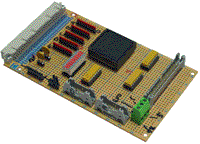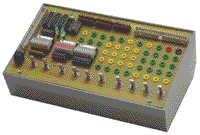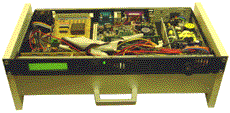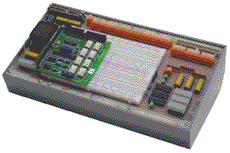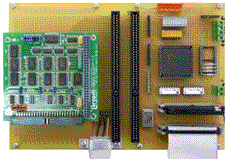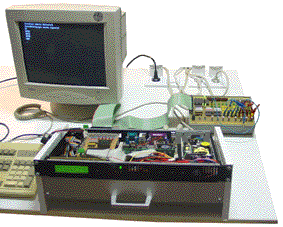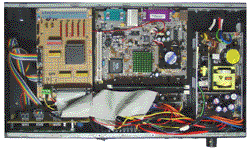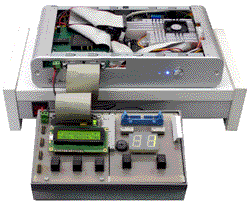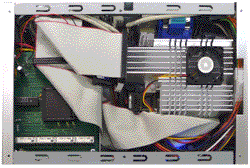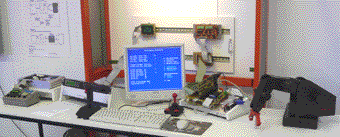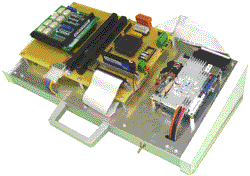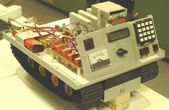
Ideen — Projekte — Fachwissen
|
|
|
ATA IO: Using ATA Interfaces for General Purpose Input/Output Applications |
| Home (German) |
| ReAl Computer Architecture |
| Links |
| Imprint (German) |
| Contact |
|
The basic idea: Using ATA interfaces to attach application-specific circuitry. Why?
Application examples:
ATA IO projects: Development platform: Xilinx ISE 8.1. IC family: Xilinx XC9500. ATA IO Adapter 05a. Five general-purpose 8-bit-ports. Fits in XC95108. Project -- Schematic -- Description ATA IO Adapter 05ax. Like 05a, but supports selective addressing completely. Requires at least XC95144. Project -- Schematic -- Description ATA IO Adapter 8255_01. Three 8-bit-ports. Emulates the vintage 8255 in mode 0. Project -- Schematic -- Description ATA IO Adapter 8255_02. Five 8-bit-ports. The first three emulate the 8255 in a restricted mode 0 (control register cannot be read back). The remaining two are general purpose ports similar to those of the adapter 05a. Project -- Schematic -- Description
-- Descriptions are still in German. Will be replaced by and by . . . . -- ATA-to-ISA Bus Adapter 06a. Emulates an 8-bit ISA Bus (I/O cycles and interrupt signalization). ISA timing controlled by software. Project -- Schematic -- Description -- Theory of operation ATA-to-ISA Bus Adapter 06c. Emulates an 8-bit ISA Bus (I/O cycles and interrupt signalization). ISA timing controlled by hardware. Project -- Schematic -- Description -- Theory of operation ATA front end 01a. A functional block for attaching a parallel ATA (PATA) interface. Project -- Theory of operation Useful macros. Project |
|
|
News:
Additional illustrations. ATA I/O vs. well-established solutions.
Code examples:
A short introduction into the principles of ATA I/O programming
Declaration of port addresses (example related to the ATA I/O adapter 05a attached as slave device)
The basic I/O routines for accessing the ATA I/O adapter 05a
Schematics of experimental boards:
ATA-to-ISA Board 07a. This board accommodates an adapter ATA-to-ISA 06c, two ISA slots and one PC/104 connector
I/O Board 05a. This Board accommodates a CPLD which can be programmed freely (among others, to be an ATA I/O adapter 05a or an 8255 supplemented by two universal ports)
Descriptions of ATA I/O adapter circuits:
ATA I/O port adapter 05a / 05 ax. Five general-purpose 8 bit I/O ports.
ATA I/O adapter 8255a. Three 8255-like I/O ports. Optionally two additional general-purpose I/O ports.
